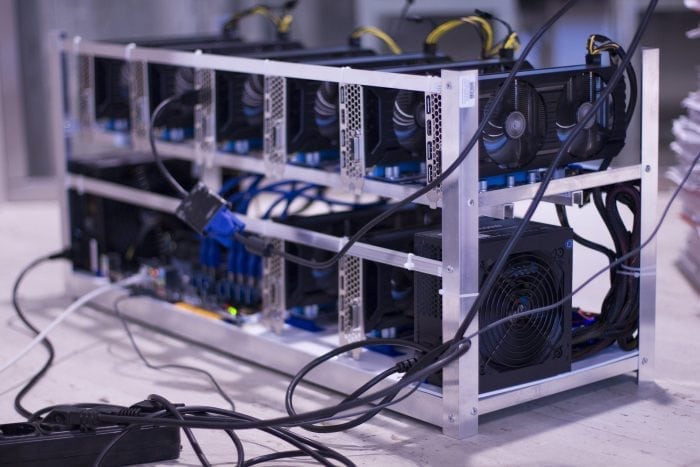
By now you have probably heard of the revolutionary cryptocurrency Bitcoin and how it’s going to shape the world of the future. The currency was originally made in 2009 by an elusive coder, who goes by the alias Satoshi Nakamoto, as a way of creating a decentralized universal currency that allows users to exchange tokens for products without centralized intermediaries, e.g. banks. Instead of using banks to record transactions and update ledgers, it is done through ‘blockchain’.
Blockchain exists on the thousands of computers on the bitcoin network as an expanding ledger that holds the transaction history of all the bitcoins. Therefore bitcoin is classified as a peer to peer network, meaning that everyone who has bitcoin is a small fraction of the bank of bitcoin. However, how are transactions certified and allowed onto the blockchain if no central intermediary exists to control it? This is where mining comes in.
Miners are, as it would suggest, individuals whom mine bitcoin. However, as bitcoin is a cryptocurrency and not a physical product like gold, it works in a much different way. Mining computers collect pending bitcoin transactions into blocks of 100 and then convert them into a mathematical formula. Miners are then tasked with finding the solution to the formula. The first to do so must announce it to the network, where the sender is then checked to ensure they have the right to send the funds, and solution to the formula is checked by other miners. If accepted the transaction is approved. Repeating this process 100 times awards the miner with bitcoins.
Originally 50 bitcoins were rewarded, however, every time every time 210,000 blocks are added to the blockchain (21,000,000 transactions approved) the reward halves. The reward currently sits at 12.5 bitcoins which currently equates to $71,500. This process creates a smart way to issue the currency and gives an incentive for miners to join and help increase the security of the network. The amount rewarded will continue to half until no more bitcoin is rewarded and the programmed circulation limit of 21 million will have been reached.
Due to the limited nature of bitcoin, every time a block is added to the blockchain and bitcoin is rewarded, the mathematical problems that need solving increase in difficulty. This makes mining harder and somewhat replicates the nature of gold, in that there is a finite amount and the more you mine, the harder it becomes to find.
Anyone with access to the internet and suitable hardware can mine bitcoin. Initially, the mining of bitcoin was relatively straightforward and the maths problems could be solved with a normal computer processor. Soon the discovery was made that gaming graphics cards were much better suited to solving the maths problems, this meant that bitcoin could be mined at an increased rate. Unfortunately, graphics cards use a lot of electricity and generate a lot of heat. Commercial products then began to appear which used reprogrammed chips to mine bitcoin, they were faster than the graphics cards however still power hungry. These paved the way for application-specific integrated circuit chips (ASIC) which were designed specifically for bitcoin mining, making the entire process much faster whilst using reduced amounts of power.

Bitcoin mining (Pixabay)
Unfortunately, as the mathematical problems become harder to crack, more advanced, expensive, energy-demanding hardware is needed to mine bitcoin. Due to the energy demands of mining bitcoin, it is no longer viewed as profitable for the average person. Instead, a handful of huge bitcoin mining farms have been set up around the world which are full of computers mining bitcoin. An example of such is a farm owned by Genesis Mining in Iceland which contains approximately 25,000 graphics cards and has an electricity bill of 1,000,000 euros per month. Iceland was chosen for this farm not just because of its the scenery, but also the cheap electricity costs on offer, and a cold climate which helps to keep the hardware cool.
Mining bitcoin basically refers to authorizing bitcoin transfers via the completion of mathematical problems for a reward of bitcoin. Bitcoin is mined using a variety of graphics cards and specialized hardware. Unfortunately, as the mathematical equations increase in difficulty and the reward decreases, many miners have been plunged into an arms race to find and utilize the latest most efficient mining technology, with some setting up huge mining farms in low power cost regions of the world to keep profitability in check.








